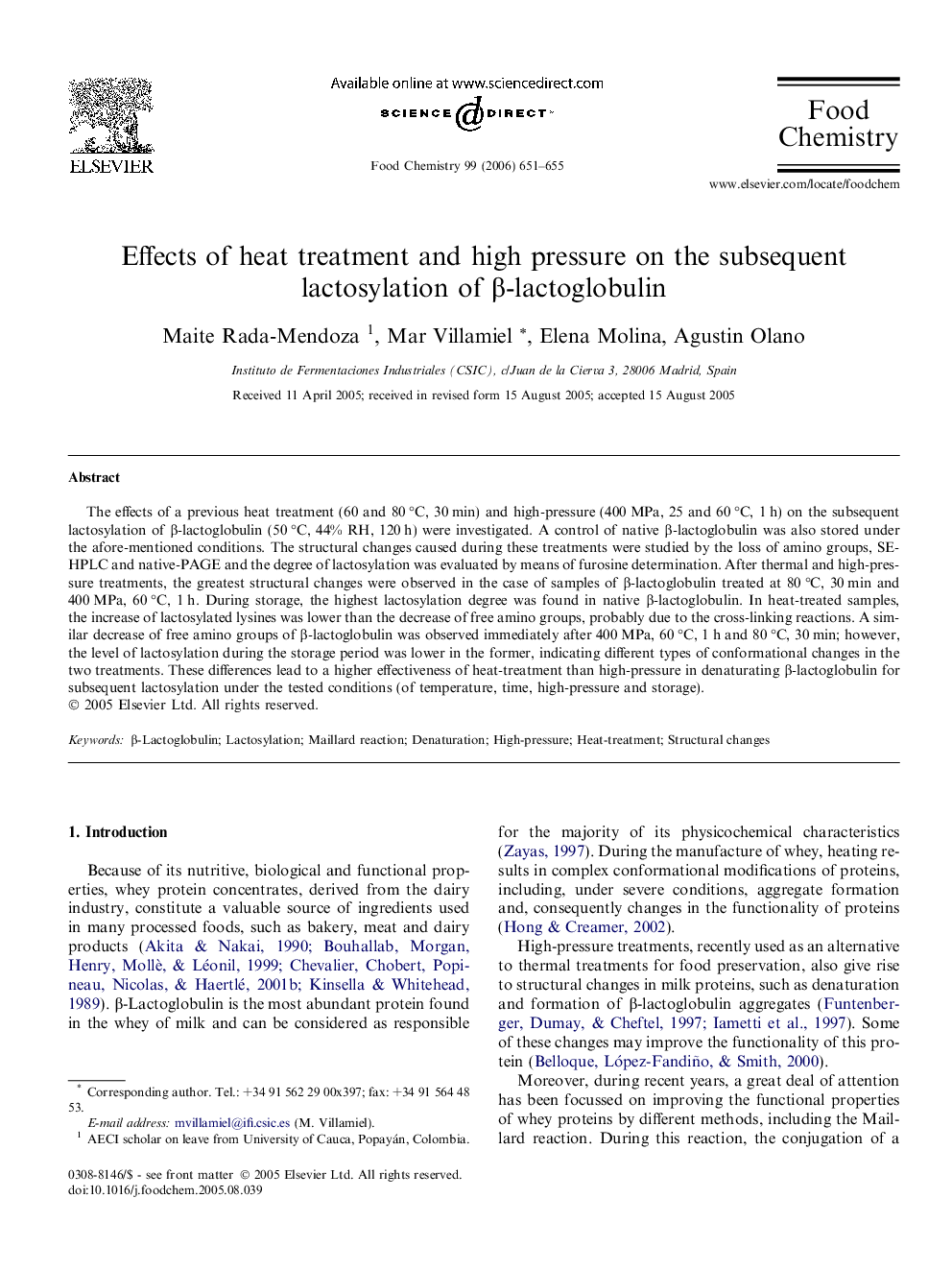| Article ID | Journal | Published Year | Pages | File Type |
|---|---|---|---|---|
| 1188384 | Food Chemistry | 2006 | 5 Pages |
The effects of a previous heat treatment (60 and 80 °C, 30 min) and high-pressure (400 MPa, 25 and 60 °C, 1 h) on the subsequent lactosylation of β-lactoglobulin (50 °C, 44% RH, 120 h) were investigated. A control of native β-lactoglobulin was also stored under the afore-mentioned conditions. The structural changes caused during these treatments were studied by the loss of amino groups, SE-HPLC and native-PAGE and the degree of lactosylation was evaluated by means of furosine determination. After thermal and high-pressure treatments, the greatest structural changes were observed in the case of samples of β-lactoglobulin treated at 80 °C, 30 min and 400 MPa, 60 °C, 1 h. During storage, the highest lactosylation degree was found in native β-lactoglobulin. In heat-treated samples, the increase of lactosylated lysines was lower than the decrease of free amino groups, probably due to the cross-linking reactions. A similar decrease of free amino groups of β-lactoglobulin was observed immediately after 400 MPa, 60 °C, 1 h and 80 °C, 30 min; however, the level of lactosylation during the storage period was lower in the former, indicating different types of conformational changes in the two treatments. These differences lead to a higher effectiveness of heat-treatment than high-pressure in denaturating β-lactoglobulin for subsequent lactosylation under the tested conditions (of temperature, time, high-pressure and storage).
